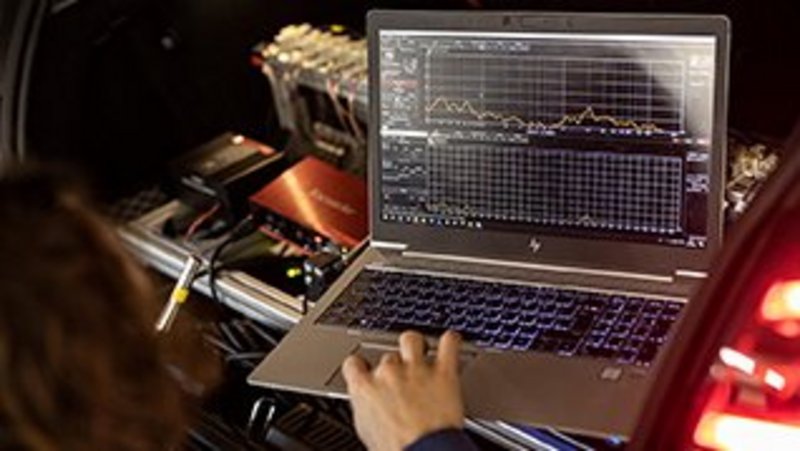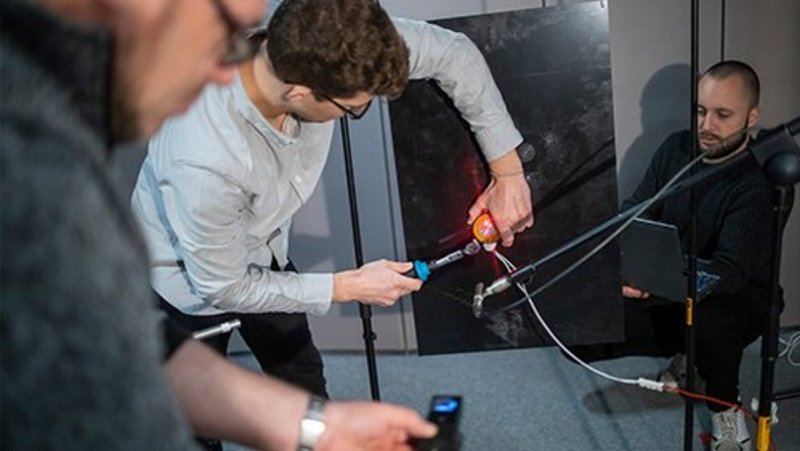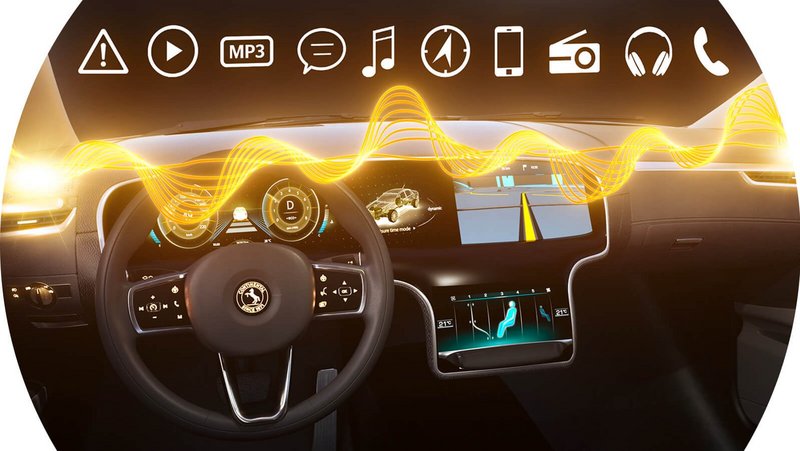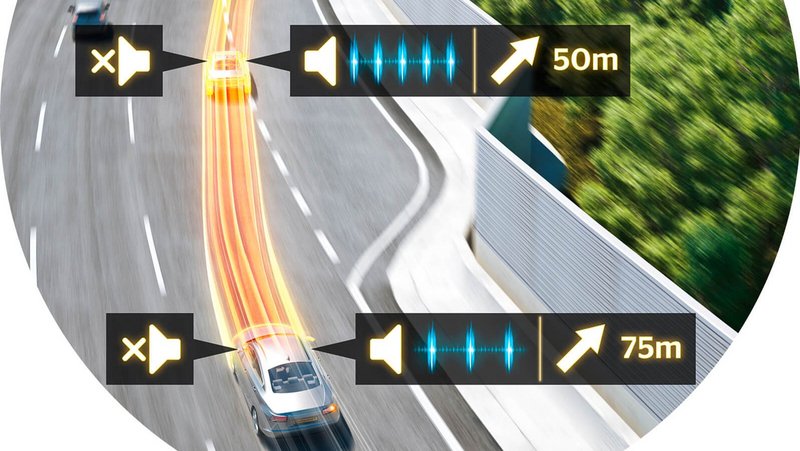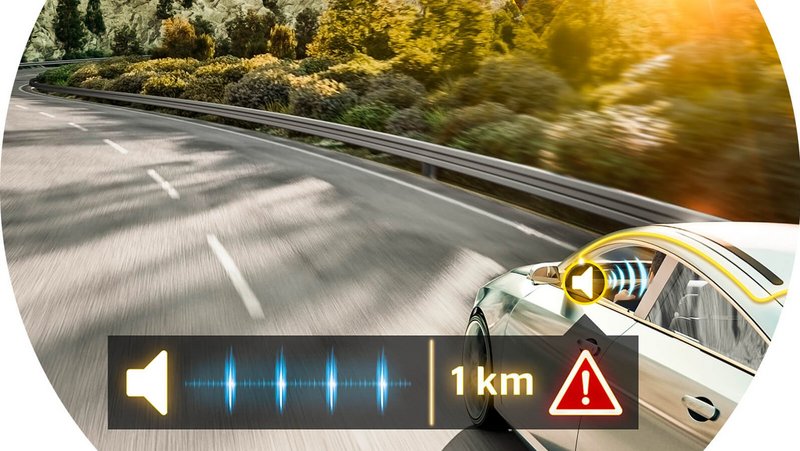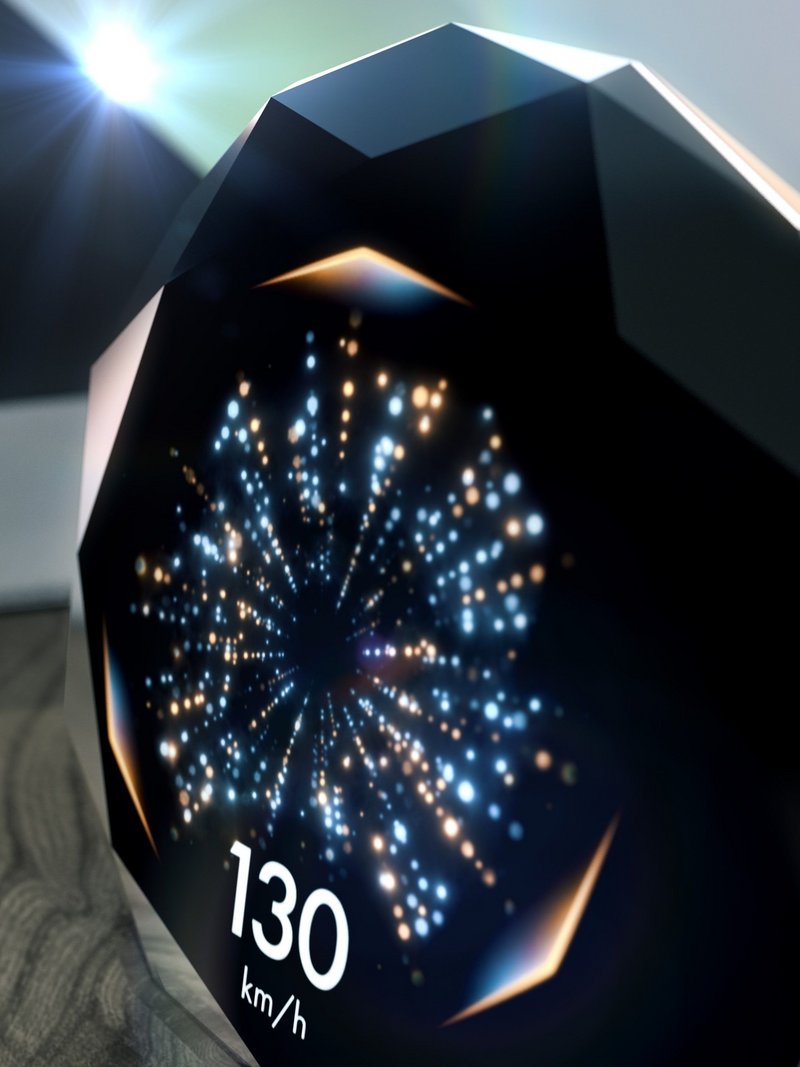The Audio Revolution
The Audio Revolution
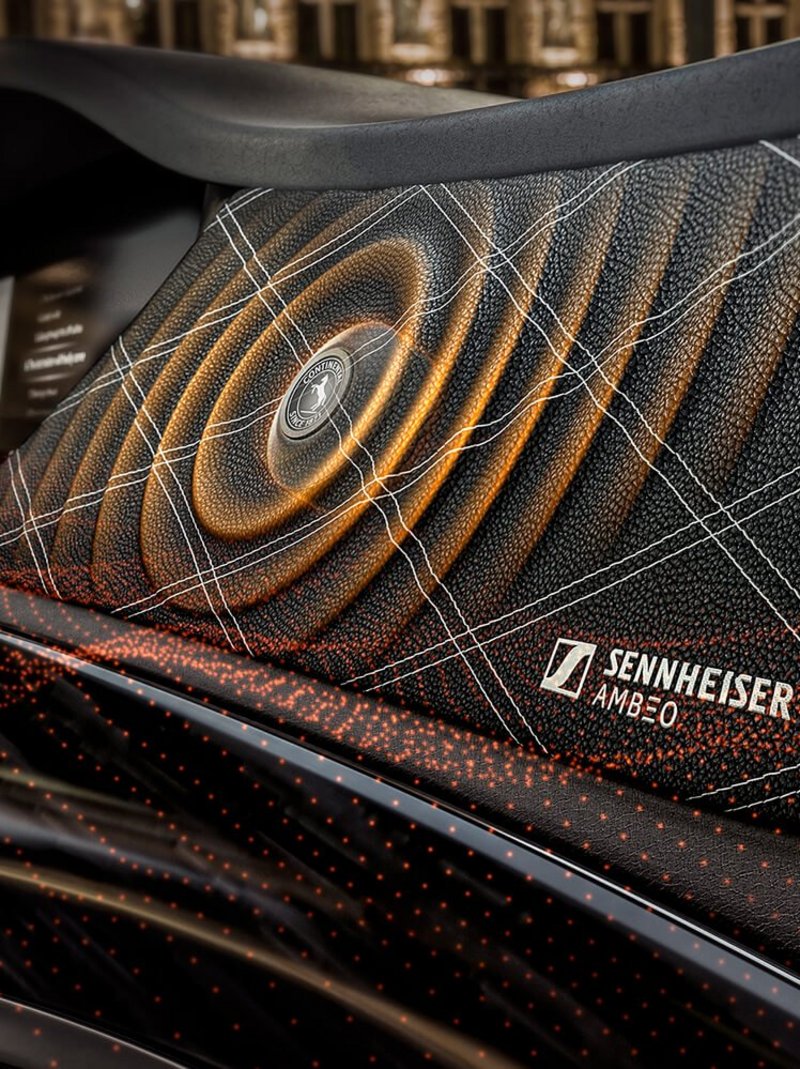
For people who spend a lot of time on the road, their vehicle is like a haven or a second home, and good sound is an important part of it. For some time now, many car audio systems have been overtaking home systems. And there’s also much more they can do, for example, by improving road safety and helping navigation.
Vehicles Become Musical Instruments
In the car world, slowly but surely, modern audio systems are taking the driver’s seat. But many cars are still lugging around heavy sound systems and subwoofers. Radio, loudspeakers and cables alone in a normal vehicle can weigh up to 40 kilograms – impacting fuel consumption and thus also the environment. For this reason, Continental has embarked on a new, forward-looking path and developed a speakerless technology: The Ac2ated Sound System produces sound by making existing surfaces in the vehicle vibrate using specially developed actuators.
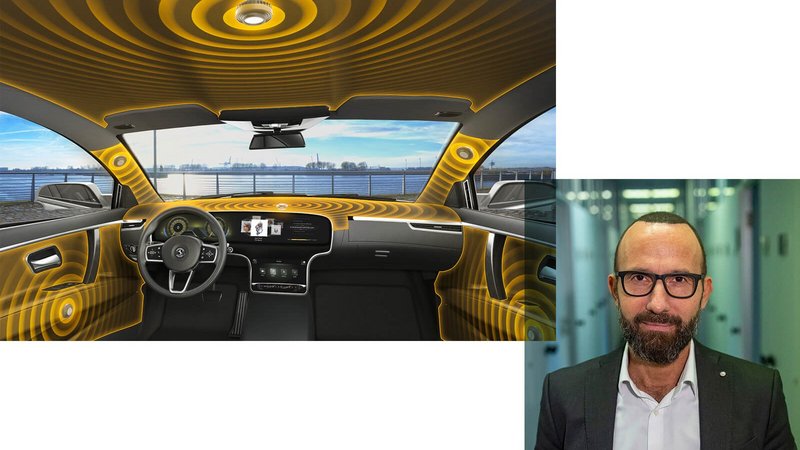
Dimitrios Patsouras, Head of Competence Center NVH (noise, vibration, harshness), explains the concept: “We approach the entire car like a sound box, in the same way as a classical string instrument whose wooden body acts as a resonance chamber. Each part of the car – the body panels, door trim, roof trim, trunk – has certain acoustic characteristics of its own. We have tried to turn this to our purposes and asked the question, are speakers still necessary if the car itself has the prerequisite for generating sound? The answer was not really, and so the idea for the Ac2ated Sound System was created. The point is to treat the car like an orchestra. The column panels are the violins, the door trims are the cello, while other parts of the vehicle are the double bass. The real trigger for the idea, however, was not the issue of sound as such, but of identifying potential savings in vehicle weight.”
Not only is this good for the environment, it also delights carmakers and designers because no wide loudspeaker fronts need to be planned and integrated. Compared with conventional sound systems, this means a reduction in weight and space of 75 to 90 percent. Electric vehicles in particular, in which weight and space are paramount, would benefit from the new technology.
Continental and Sennheiser Revolutionize Vehicle Audio
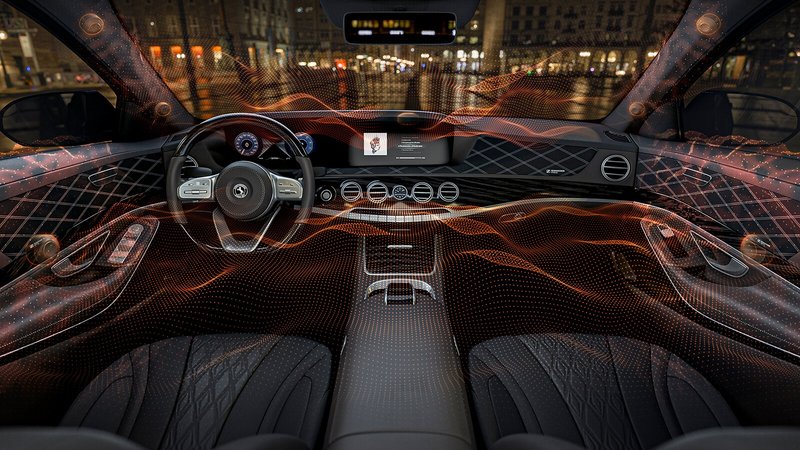
Concert-quality Audio
But that’s not all: In the future, vehicle occupants will be able to relax and enjoy breathtaking sound experiences, while driving will become almost a secondary issue. In collaboration with the audio pioneer Sennheiser, Continental can provide 360-degree in-car sound. This is made possible by the AMBEO Mobility Software Technology from Sennheiser, whose integrated algorithm automatically converts stereo sources into 3D sound, without the need for a specific 3D audio source. The result is an immersive sound experience that puts the occupants in completely new, lifelike acoustic surroundings, giving them the feeling that they are in a concert hall immersed in the music.
Safer driving thanks to targeted sounds
However, a unique musical experience is only one aspect of modern car audio systems. Modern cars emit a wide range of other sounds – clicking turn signals, parking assist, navigation assist, warnings, incoming messages, phone calls. Although they each have an important function, they usually have to be controlled separately from one another. For drivers, this can be not only nerve-wracking, but also a safety risk. “That’s why we’re introducing fundamental changes to the in-car sound environment,” says Dimitrios Patsouras. “For example, combining noise reduction with infotainment, like with noise-reducing headphones, which can do much more than just reproduce music. Relevant noises from the car, navigation system announcements or other audio information are recorded in a way that delivers optimal driver comprehension and reduces other noise inside and outside the vehicle.”
Outside the vehicle, too, audio will take on a new dimension, as Dimitrios Patsouras explains with regard to electric mobility: “The first legislation has come out, for example, in the USA and the EU, requiring electrically powered vehicles have to be fitted with an Acoustic Vehicle Alerting System (AVAS). When implemented, these specifications will require vehicles running in electric mode at speeds below 30 km/h to emit more noise than well-tuned vehicles with combustion engines. As a result, a multi-story car park will become a concert of cacophony. Of course, local residents won’t be happy if vehicles make even more noise despite being electric. However, there is a technical solution: Sensors on the vehicle could assess whether the artificial vehicle noise is necessary in the first place. It will only be activated if necessary.”
Sounds to the Driver’s Taste
Apart from the numerous safety features, central audio management also has plenty of room for individualizing the sound experience. For example, personal sounds can be set for non-safety-critical functions, be it a birdsong, parts of your favorite track or sounds from science fiction blockbusters. Third-party sound algorithms can also be integrated, for example, for noise reduction or for the 3D sound described earlier.
Talk to Me – the Continental Smart Voice Assistant
If we add the potential of language assistants, driving becomes even more comfortable and safer. The Continental Smart Voice Assistant significantly reduces distraction when driving as it does away with the need for touchscreens or buttons for frequently used functions. Instead, drivers can activate the intelligent voice control system using individual speech recognition, as is familiar on smartphones, and then, for example, communicate their music requests or destination using a voice command. Even more basic vehicle functions can be controlled in this way. For example, the assistant can explain the warning symbols on the display board and provide a recommendation for the driver as soon as the Smart Voice Assistant is called up. In addition, the system learns from the driver’s behavior and preferences and can therefore adapt and improve courses of action.
Let the Music Play – Sound Solutions for Everyday Life
